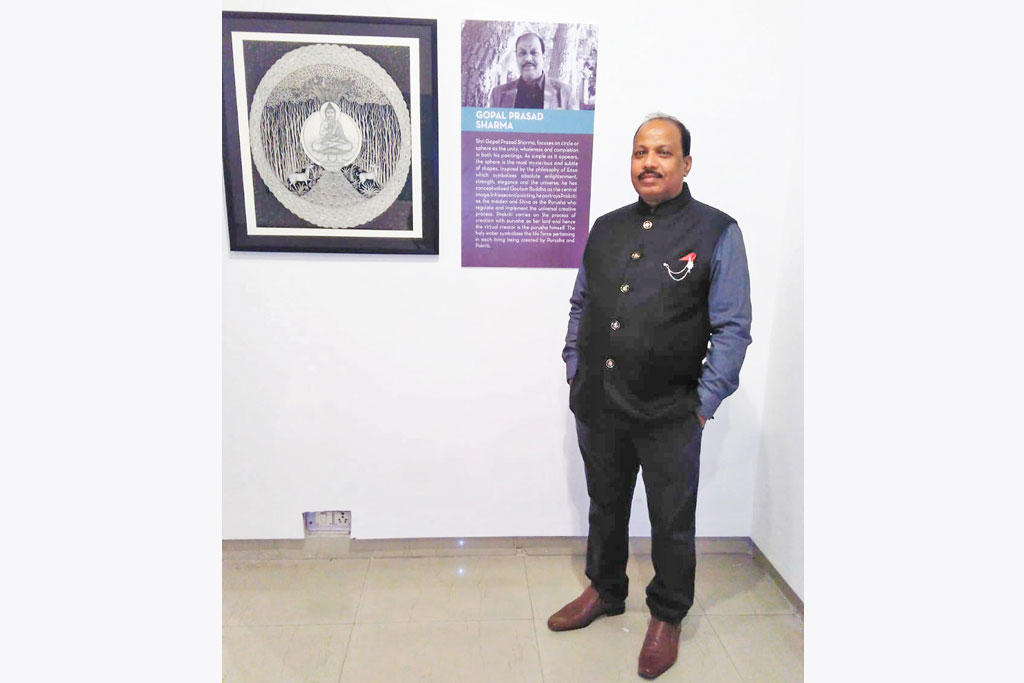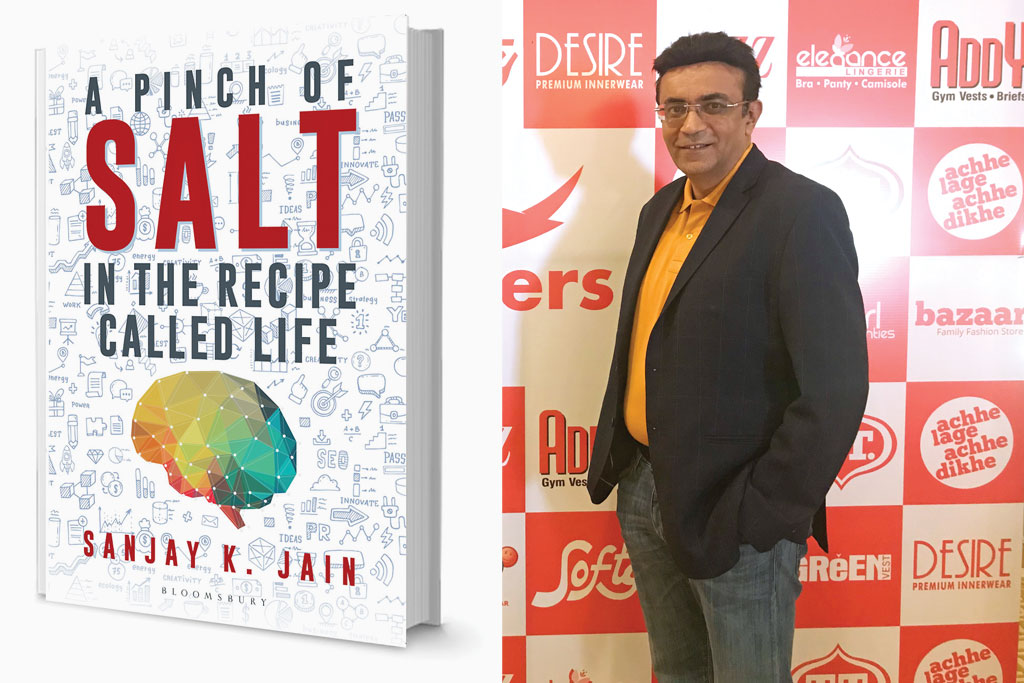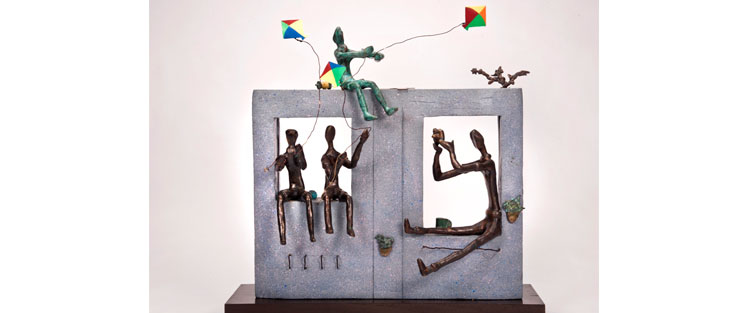
Miniature Marvels
Rajasthan is dotted with forts, palaces, havelis and temples that stand out for their ornate facades and rich interiors replete with colourful frescoes and murals, thanks to a gifted community of masons and artists who thrived under royal patronage during the era of rajas and maharajas. Gopal Prasad Sharma traces his ancestry to one such family of court artists and masons from Bijolia, which was a part of the former state of Mewar. This artistic lineage inculcated a love for paintings in him, which was furthered by his father Kanhaiya Lal Sharma teaching him the basic principles of art. But unlike his father, who was versed in the family tradition of wall art, Gopal Prasad Sharma found his calling in miniature paintings instead.
Early years
Gopal Prasad Sharma was born in Bijolia, in 1964. Sometime around 1980, the pursuit of a career and the need to earn money took him to Jaipur, where he still lives with his daughter, son and daughter-in-law, his wife Shashi Bala Sharma having passed away a few years ago. During his early days in Jaipur, Sharma recalls, he would take up assignments for making copies of pictures from books and calendars, copies of antique paintings and the like, for small business houses and shopkeepers. Often he would get orders for making pictures on ivory (a banned item now), which would require him to make very small paintings. This honed his skills for depicting minute details, and after working in the field for 7-8 years, he switched to miniature paintings.
Changing direction
Miniature painting involves working in great detail on a very small scale, which calls for intricate and delicate brushwork. Over the centuries, miniature paintings have been popularised in India through several schools, among which the Kishangarh, Kangra, Rajasthani, Bundi, Kota, Pahari and Mughal Schools particularly gained popularity in Rajasthan.
The next phase of Sharma’s career saw him immerse himself totally into miniature paintings, creating almost a record number of them. He worked and researched intensely on the various styles of miniature paintings prevalent in Rajasthan, which not only enabled him to become proficient in each style but also innovate and create a blend of the various styles that was more refined, unique and his very own. Since then, his style and works have inspired other artists, even leading some to copy his works; but rather than this being a reason for distress, it actually pleases Sharma to think that he has been able to inspire other artists to learn from him. Sharma’s desire to teach others actually spills over to other domains as well in that to date he has given free lessons in art to thousands of college students and aspiring artists through workshops conducted at various institutions.

Fine miniature painting of wedding precession in Mughal Style
Attention to detail
What makes Sharma’s works exceptional is his attention to detail, some of the finer aspects of his paintings being thinner than a strand of hair, even requiring magnifying lens sometimes to see them clearly. The paintings are usually made on handmade paper, using a very fine brush and natural colours derived painstakingly from coloured stones, vegetables and even pure gold and silver. Some of his works feature elaborately detailed processions of colourfully dressed men and women. In some of these paintings, each figure has been made to look different in terms of colour, design, ornamentation and features, which together with the architectures and the leaves and trees, make them true masterpieces. Understandably, it takes endless patience and time to make these paintings. One of his paintings, the Ram Durbar, for example, took Sharma five years to complete!
Honours and recognition
One day, during a discussion on drawing portraits on a single grain of rice, as some artists had accomplished, Gopal Prasad Sharma’s wife Shashi Bala sowed the germ of the idea of drawing an image on a grain of mustard seed. Inspired, Gopal Prasad set to work and, incredulously, achieved the near-impossible feat by drawing a portrait of Mahatma Gandhi on a singles like Chhatrapati Shivaji Maharaj, Indira Gandhi and Maharana Pratap. The extraordinary achievement went on to earn him a place in the Limca Book of Records in 2001.
Beyond the Limca Book record, Sharma, of course, has won numerous awards for his art. Among the more prestigious of these are the Rajasthan State Award, in 1998-99, conferred by the Government of Rajasthan; the National Merit Award, in 2000, from the Government of India; and the National Award, in 2007, from the Government of India; to mention a few.
Besides these, Sharma has also been honoured with awards and recognitions at reputed international trade fairs in India and abroad, such as the Frankfurt Tendence International Fair, Germany, where he won the first prize; the 34th Surajkund International Crafts Mela, Faridabad, Haryana, where he was bestowed with the Kala Nidhi award; and many others.

Fine miniature painting of Rajasthani royal lady
A versatile artist
As a self-made artist whose early days saw him take up all kinds of painting assignments, Sharma actually is a versatile artist who says that there is no painting job that he cannot execute. Apart from selling his paintings, he also receives commissions, on one occasion having made an elaborate miniature painting for a Mumbai industrialist.
Sharma’s children too have followed in his footsteps and are artists as well. While daughter Neha is a state award winning artist specialising in miniature phad painting, son Abhishek helps his father with exhibitions and shows in both India and abroad, apart from taking care of other art related jobs.

Gopal Prasad Sharma with an art enthusiast, at an art demonstration in Frankfurt, Germany









